
Peperomia prostrata, also known as the ‘String of Turtles,’ is a unique and attractive trailing succulent plant that can add a touch of elegance and greenery to any space. With its small, round leaves that resemble turtle shells, it’s no wonder why this plant is becoming increasingly popular. In this guide, we will cover everything you need to know about caring for and propagating Peperomia prostrata.

Description of ‘String of Turtles’
Peperomia prostrata ‘String of Turtles’ is an eye-catching trailing succulent prized for its delicate, vining growth and unique leaf shape. Also known as ‘Turtle Vine’ due to its oval, elongated leaves, this Peperomia variety produces thin stems that can reach up to 12 inches in length, making it well-suited for hanging baskets where its foliage can dangle gracefully down. The stems radiate out from the soil, giving the impression of an overflowing basket of plenty.
The succulent leaves of Peperomia prostrata ‘String of Turtles’ are typically solid green in color, although some variations may display attractive variegation in cream or pale yellow along the margins or as bands across the surface. New growth emerges as red shoots, introducing additional visual interest. This easy-to-care-for Peperomia thrives in bright, indirect light and minimal watering. Its trailing stems can also be quite decorative when allowed to drape and sprawl over the edges of a shelf, mantel, or other surface.
With its delicate and unusually shaped foliage that evokes thoughts of turtle shells, Peperomia prostrata ‘String of Turtles’ is a charming choice for both hanging displays and trailing accents. When provided with suitable growing conditions, it flourishes and spreads, creating lush lengths of this eye-catching succulent vine.
Important Info for All: Drainage Hole at the Bottom of The Pot: Do Succulents Need Them? The Answer Might Completely Shock You!

‘String of Turtles’ Care
Peperomia prostrata ‘String of Turtles’ is relatively low maintenance, and can be grown indoors or outdoors in warm climates. The key to successful care is to provide a free-draining, fine soil-less substrate and to avoid over-watering, as the plant is susceptible to leaf rot. Here are a few more tips to help keep your String of Turtles healthy:

- Light and Temperature: The plant prefers bright, indirect light, but can tolerate lower light levels. Keep the plant out of direct sunlight, as it can quickly burn the delicate leaves. Peperomia prostrata is tolerant of a wide range of temperatures, but prefers temperatures between 60 and 75 degrees Fahrenheit.
- Humidity: High humidity is preferred, but if the humidity level is low, misting the leaves can help.
- Fertilizer: Fertilize the plant once a month during the growing season with a balanced houseplant fertilizer.
- Handle With Care: The leaves are delicate and can fall off easily, so handle the plant with care.
Everything you need to know about: Root Rot in Succulents: How to Identify and Treat the Problem
Watering ‘String of Turtles’
Watering Peperomia prostrata, also known as the “String of Turtles,” is an important aspect of its care. Here are some tips on how to properly water your plant:
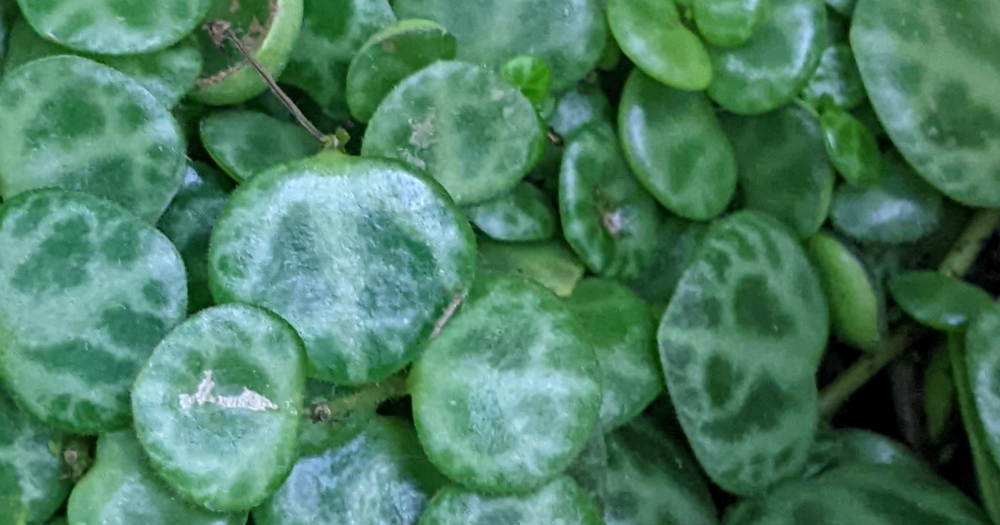
• Allow the soil to dry out between waterings. Overwatering can lead to root rot, so only water when the top inch or so of soil is dry. Check the soil before watering and avoid keeping the plant constantly moist.
• Water less in the winter when growth slows. The watering needs of Peperomia prostrata will vary based on the season. In the winter, scale back watering and only water when the soil is quite dry. This helps avoid root rot and mimics the plant’s native environment.
• Choose a pot with adequate drainage. The trailing stems of Peperomia prostrata ‘String of Turtles’ are prone to rot, so choose a pot with drainage holes and consider a potting mix formulated for succulents or cacti. This will help excess water drain away from the roots.
• Avoid getting water on the leaves. It’s best to water Peperomia prostrata ‘String of Turtles’ at the base of the plant to avoid getting the leaves wet. Excess moisture on the leaves can lead to leaf drop or other problems. Water carefully and be sure any excess drains away from the center of the plant.
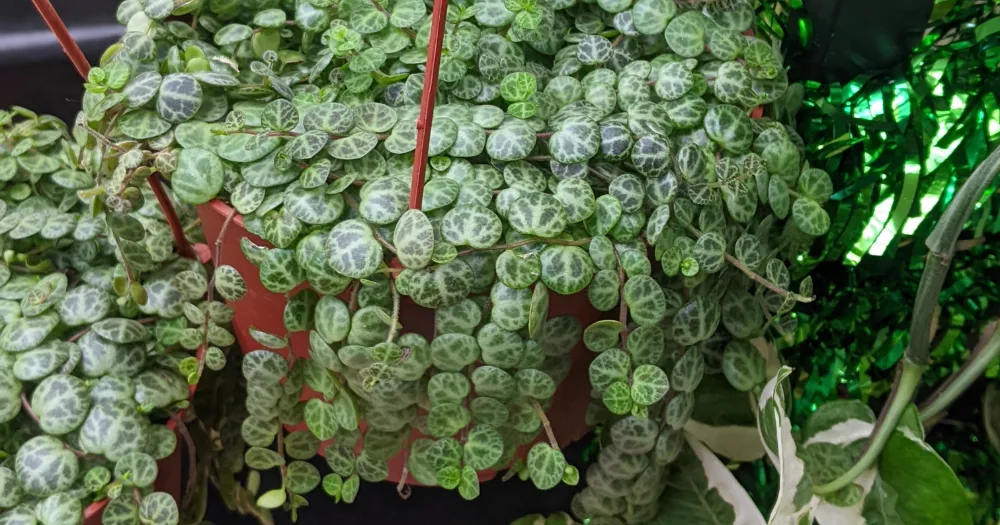
• Consider using a humidity tray. The moderate humidity needs of Peperomia prostrata ‘String of Turtles’ can be met using a humidity tray. Place the pot on pebbles with some water added. This will increase humidity for the plant without keeping the soil too wet. Refill the tray when the water level gets low.
By following these guidelines, you can find the right balance of moisture for your Peperomia prostrata ‘String of Turtles’. With some time, you’ll get to know how your individual plant responds to water and be able to determine when it needs a drink. When provided with well-draining soil and watered properly, this succulent can thrive and produce its distinctive trailing stems and oval leaves.
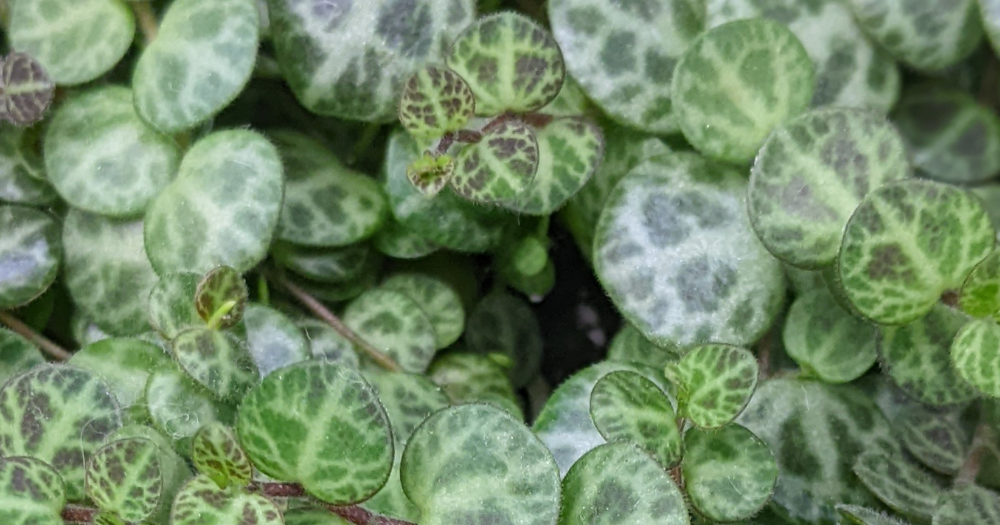
• Use lukewarm water. Never use cold water for this succulent. Water at room temperature allows it to absorb moisture without shock. If tap water is very cold, allow it to sit for 30-60 minutes before watering to let it warm up.
You might also like: Taking Care of Succulents Inside
In general, it’s important to be consistent with watering, and to pay attention to the moisture level of the soil. If the soil is too dry, the leaves may start to look wilted, while if it’s too wet, the leaves may start to turn yellow or brown. With a little practice, you’ll be able to find the right balance of water for your String of Turtles.
Can’t Miss: Euphorbia alluaudii ‘Madagascan Fire Plant’: A Comprehensive Care Guide

How to Propagate ‘String of Turtles’
Once established, ‘String of Turtles’ can be propagated by taking cuttings and rooting them in a soil-less substrate. Coconut coir can also be used to propagate and grow String of Turtles, as it provides the right environment for the plant to thrive because it holds enough moisture that helps it thrive. To propagate Peperomia prostrata ‘String of Turtles’, simply take a stem cutting with a few leaves and place it in a well-draining soil. Keep the soil moist but not wet, and wait for roots to form before transplanting to a larger pot.
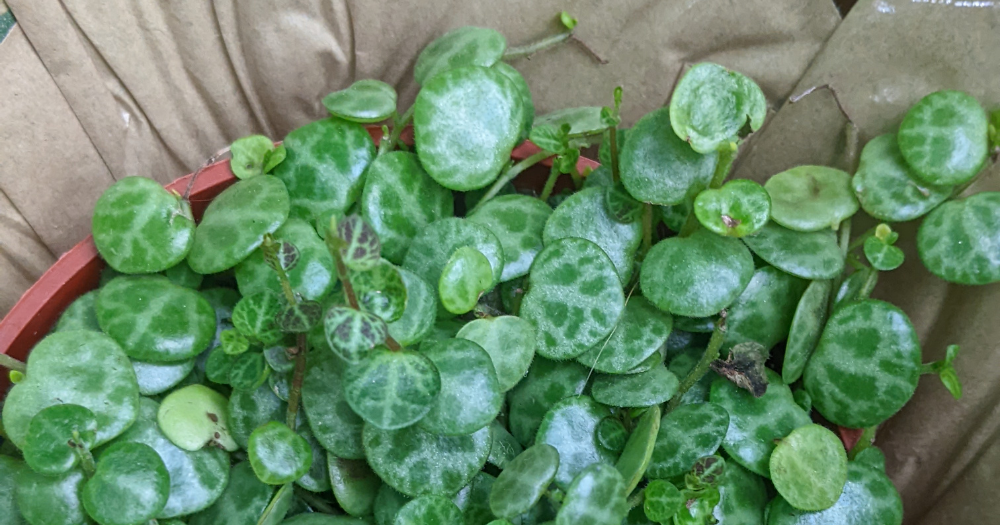
Prune to shape the plant. You can prune the trailing stems of Peperomia prostrata ‘String of Turtles’ as needed to shape the plant and encourage fuller growth. Use sharp scissors or pruning shears and cut the stems just above a leaf or side shoot. Pruning will not harm the plant when done properly.
You might like: Echeveria desmetiana: A Comprehensive Guide to This Classic Beauty

Can I grow Peperomia prostrata ‘String of Turtles’ outdoors?
Peperomia prostrata ‘String of Turtles’ can be grown outdoors in some climates, but it does have specific requirements:
• It needs partial shade and protection from intense sunlight. Direct sun can burn the leaves, so choose a spot with bright indirect light or shade for part of the day.
• Temperature requirements are 65-80 F. This succulent cannot tolerate frost, so it should only be grown outdoors year-round in warm climates. In cooler climates, it can be grown outdoors during the warmer months but must be brought indoors before temperatures drop below 65 F.
• Soil must drain well and not stay soggy. Peperomia prostrata ‘String of Turtles’ is prone to root rot, so use a cactus potting mix or amend regular potting soil with perlite or sand to improve drainage.
• Monitor for pests and disease more closely when grown outdoors. Outdoor conditions may lead to more pest and disease problems, so check your plant regularly and treat any infestations promptly.
• The trailing stems may need extra support when grown outdoors. The wiry stems can become top heavy, especially in wind or rain. Stake the stems or choose a hanging pot/basket to provide stability for your succulent.
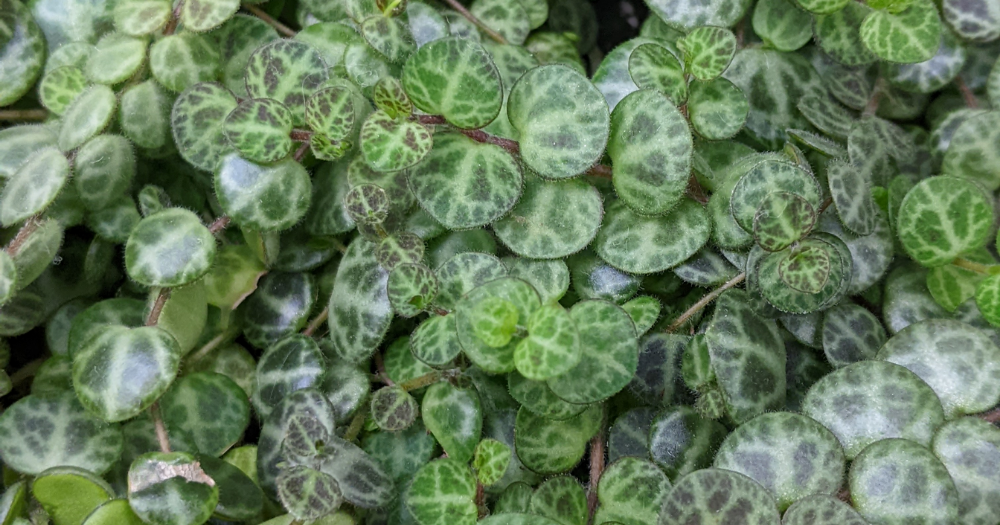
If you can provide the right conditions, Peperomia prostrata ‘String of Turtles’ can be an attractive addition to an outdoor succulent garden or patio. However, due to its temperature and sunlight requirements, it may not be suited to all climates. If unsure, it is best to start it as a houseplant and only move it outdoors for the warmer months if your area meets its needs. With some care and monitoring, this unique succulent can thrive both indoors and out.
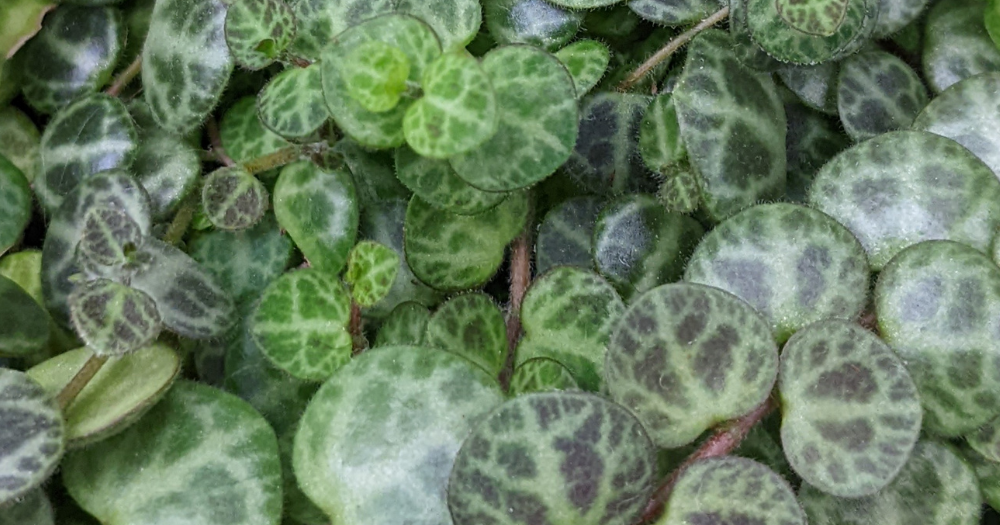
Peperomia prostrata ‘String of Turtles’ is a unique and attractive plant that is easy to care for, making it a great choice for beginners and experienced gardeners alike. With the right care, it can be grown into a lush, trailing, and insta-worthy plant. Remember to keep the soil well-draining, avoid over-watering and provide bright indirect light for your Peperomia prostrata ‘String of Turtles’. With a little love and attention, you’ll have a beautiful plant to enjoy for years to come.
You might also like: Succulent Death Bloom (Sounds like a metal band.)
Potential Issues with ‘String of Turtles’
• Leaf drop can occur if Peperomia prostrata ‘String of Turtles’ is overwatered or underwatered, or if there are other issues such as pests, disease, or low humidity. Monitor your plant for any signs of problems and adjust watering or environment as needed. New healthy leaves will grow back once the underlying issue is resolved and the plant recovers.
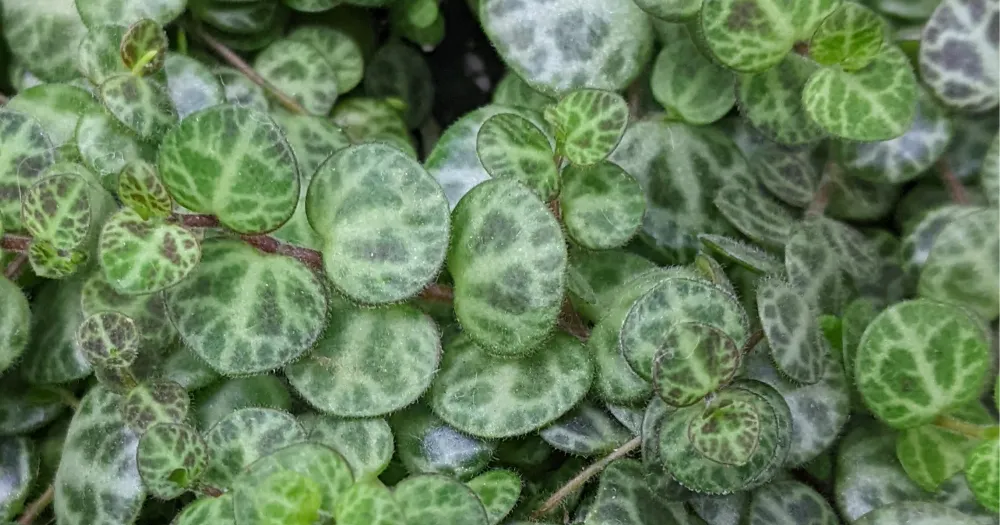
Why is my ‘String of Turtles’ pale?
There are a few reasons why your Peperomia prostrata ‘String of Turtles’ might be pale.
- Not enough light: String of Turtles need bright indirect light to thrive. If they are not getting enough light, their leaves will start to pale and become yellow.
- Too much water: String of Turtles are succulent plants, which means they store water in their leaves. If you water them too often, the leaves will start to rot and the plant will become pale.
- Not enough humidity: String of Turtles also need a humid environment to thrive. If the air is too dry, their leaves will start to wilt and the plant will become pale.
To solve these problems, try the following:
- Move your plant to a brighter spot: If your plant is not getting enough light, move it to a brighter spot in your home.
- Water your plant less often: String of Turtles only need to be watered when the soil is dry to the touch.
- Place your plant in a humid spot: You can increase the humidity around your plant by placing it near a humidifier or by misting its leaves regularly.
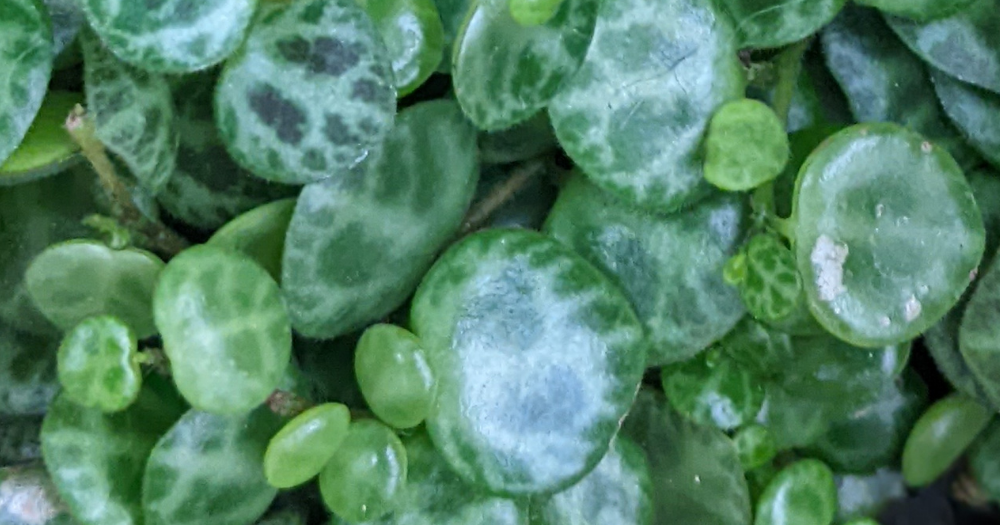
With proper care, your String of Turtles should start to look its best again in no time.
Some common pests that can affect Peperomia prostrata ‘String of Turtles’ include:
• Mealybugs. These small, white, fuzzy insects cluster on stems and leaves. They suck plant sap and can damage growth if infestations are large. Treat with insecticidal soap or neem oil.
• Spider mites. Tiny web-spinning mites can infest Peperomia prostrata ‘String of Turtles’, especially in hot and dry conditions. They cause stippling and browning of leaves. Increase humidity and regularly wipe leaves with a damp cloth. Apply miticide if needed.
• Scale. Small brown or white bumps on stems and leaves are scale insects. They suck sap and weaken the plant. Treat with insecticidal soap, horticultural oil, or neem oil. Severely infested parts may need to be pruned out.
• Leaf miners. Wriggling larvae feed between the upper and lower surfaces of leaves, creating winding tunnels or ‘mines.’ Treat with neem oil or insecticidal soap. Remove and destroy infested leaves if the infestation is minor.
• Mealybug destroyers. These small beetles feed on mealybugs but may chew on Peperomia prostrata ‘String of Turtles’ leaves, causing minor damage. Increase humidity and ventilation to prevent buildup of both pests. If needed, treat plant with insecticide following package directions.
Monitor your Peperomia prostrata ‘String of Turtles’ regularly for any signs of pests. Treatment in the early stages of an infestation will be more effective and less stressful for your plant. Be sure to follow the directions carefully when using any pest control product to avoid damage to your succulent. With prompt attention to pest problems, you can keep your Peperomia prostrata healthy and avoid major damage.
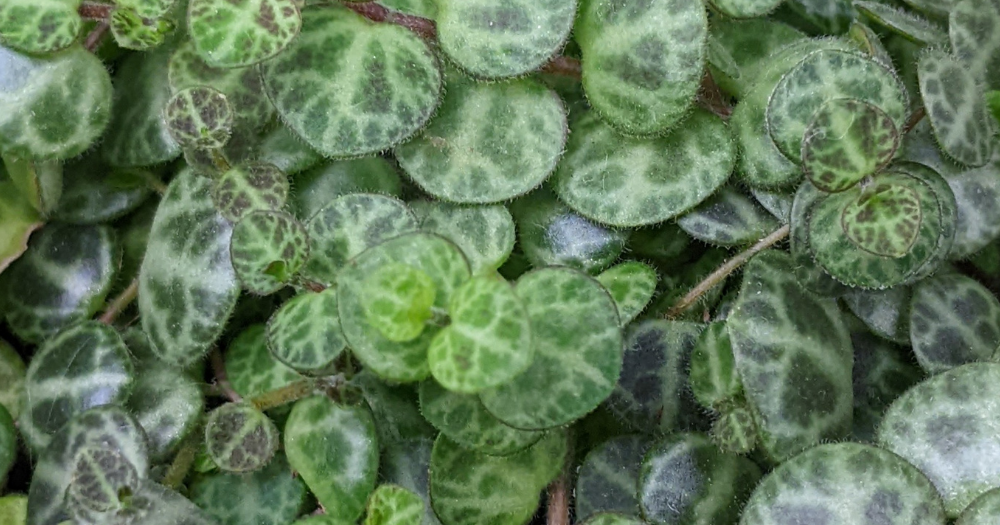
How can I increase humidity for my Peperomia prostrata ‘String of Turtles’?
Here are some tips to increase humidity for Peperomia prostrata ‘String of Turtles’:
• Use a humidity tray. Place the pot on top of pebbles with some water added. As the water evaporates, it will increase the humidity around the plant. Refill the tray when the water level gets low.
• Use a humidifier. Place a cool mist humidifier near your Peperomia prostrata ‘String of Turtles’. Run the humidifier for a few hours per day to increase humidity. This is most useful in very dry indoor environments. Be sure to follow the product directions and properly maintain the humidifier to avoid any issues.
• Group plants together. If you have multiple houseplants, group them together to create a microclimate with higher humidity. This is most effective for plants placed relatively close together. The plants will collectively lose less moisture to the air, resulting in higher humidity around the plants.
• Choose a pebble tray or humidifier suitable for the size of your Peperomia prostrata ‘String of Turtles’ and the conditions of your home. Monitor your plant for signs of too high humidity, such as leaf drop or stem rot. With some adjustments, you can achieve the right level of humidity to keep your succulent healthy.


Where to Buy Succulents Online



